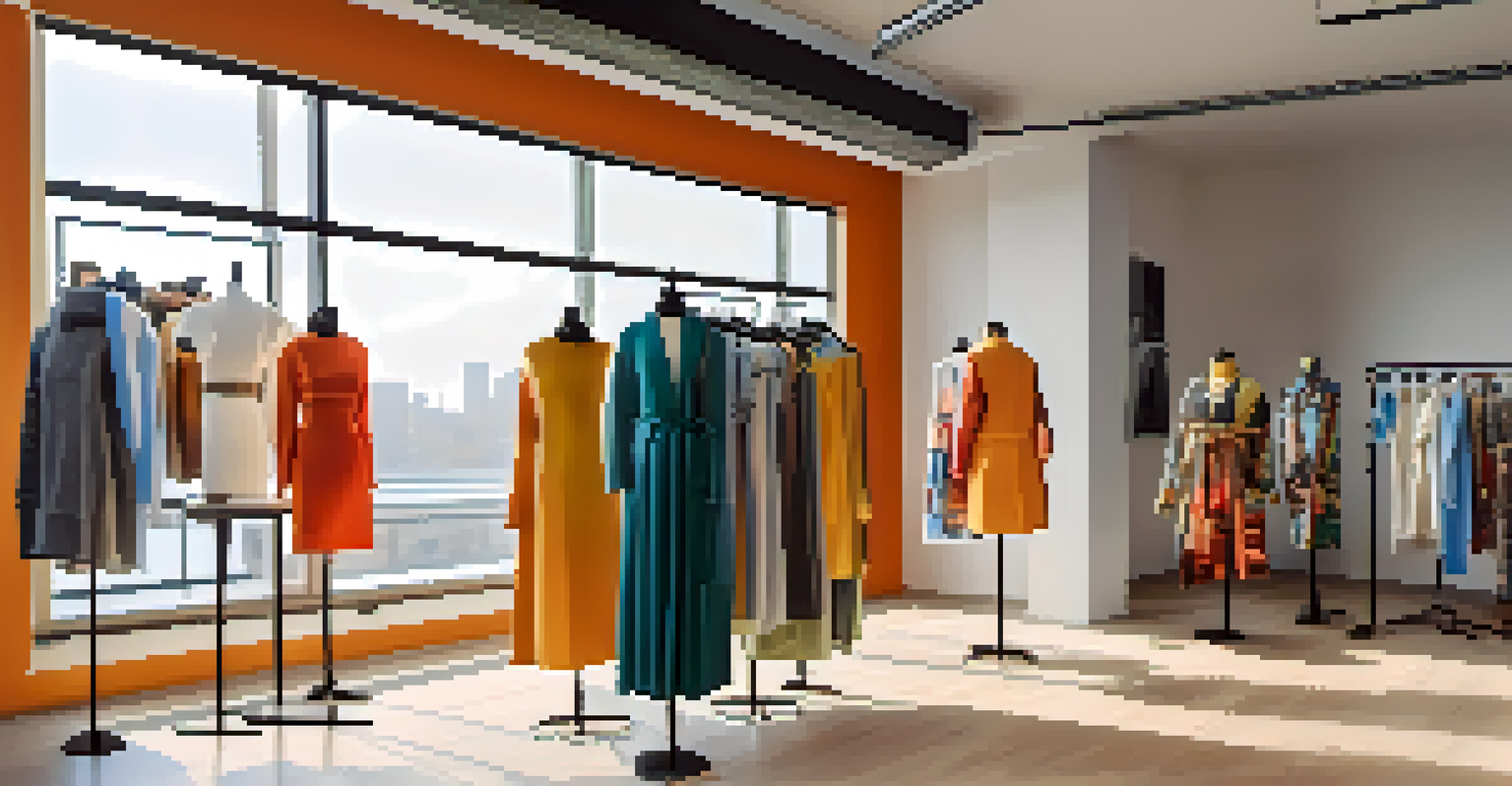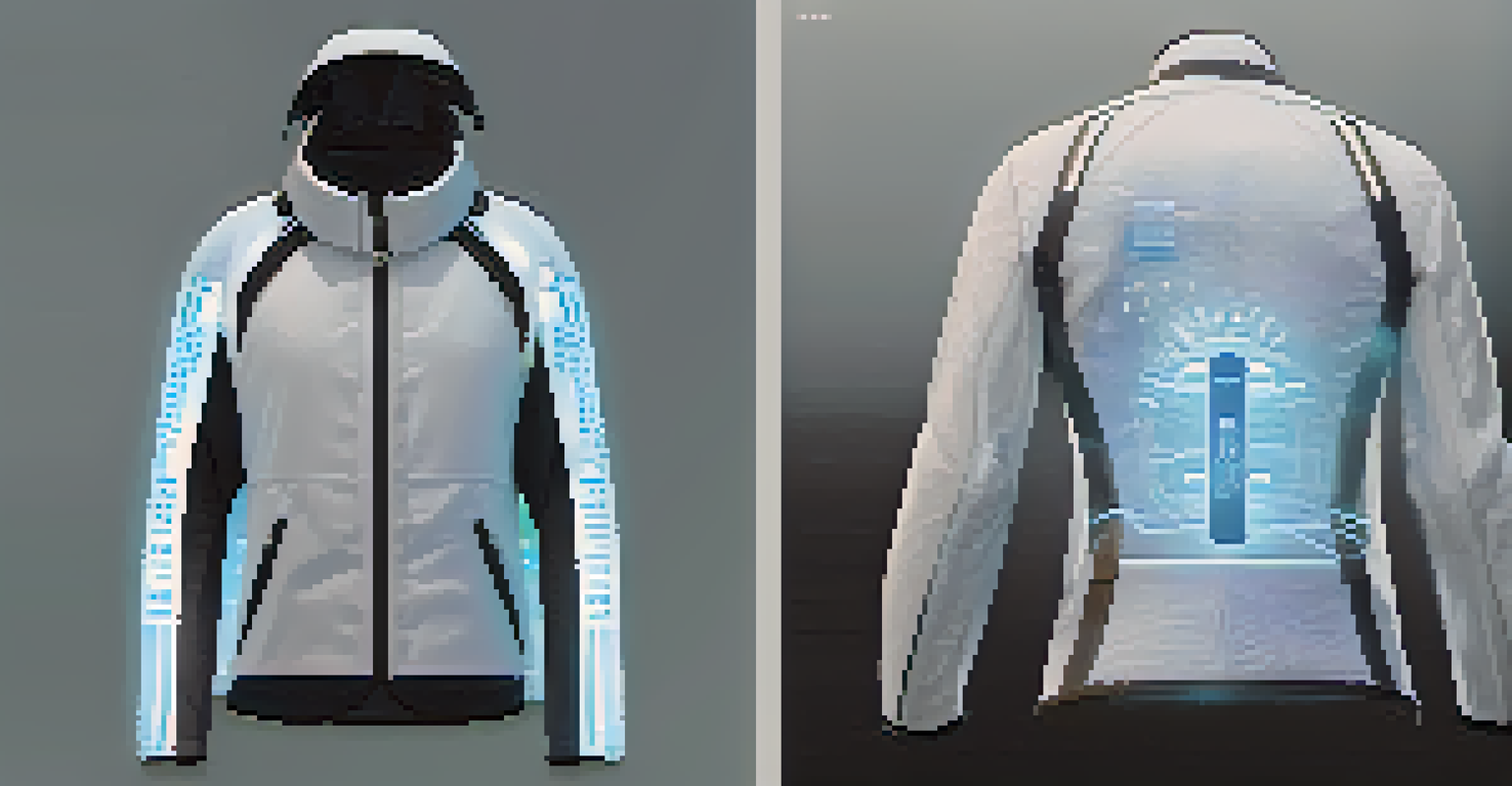Innovative Design: Fashion Solutions for Climate-Resilient Apparel

Understanding Climate-Resilience in Fashion Design
Climate-resilience in fashion refers to the ability of apparel to withstand environmental changes while maintaining functionality and style. As climate change increasingly affects our ecosystems, designers are challenged to create clothing that not only looks good but also adapts to varying conditions. This means considering factors like durability, versatility, and the materials used in production.
Fashion is the armor to survive the reality of everyday life.
For instance, think about how outdoor gear is designed to endure harsh weather. Brands are now taking cues from this approach, focusing on breathable fabrics that can regulate temperature and moisture. By incorporating elements like UV protection and water resistance, clothing can better serve consumers facing unpredictable climates.
Ultimately, the goal is to merge practicality with aesthetic appeal. As consumers become more aware of climate issues, they seek garments that are not only stylish but also capable of enduring the test of time and changing weather patterns.
Sustainable Materials: The Backbone of Resilient Fashion
When we talk about climate-resilient apparel, sustainable materials play a crucial role. These are fabrics sourced from renewable resources or recycled materials, reducing the fashion industry's carbon footprint. Examples include organic cotton, Tencel, and even innovative materials like bio-fabricated textiles made from algae.

For instance, brands like Stella McCartney are leading the way by using vegan leather alternatives that minimize environmental impact. By choosing materials that are both sustainable and durable, designers can create garments that not only last longer but also require less frequent replacement, further reducing waste.
Fashion Must Adapt to Climate Change
Designers are challenged to create clothing that merges style with functionality, addressing the demands of unpredictable weather.
This shift towards sustainable materials aligns with consumer demand for ethical fashion. As more people prioritize eco-friendliness, brands that embrace these innovative textiles position themselves as leaders in the evolving landscape of climate-conscious fashion.
Innovative Design Techniques for Versatility
One of the most exciting aspects of innovative fashion design is the emphasis on versatility. Designers are now creating pieces that can be worn in multiple ways, which is particularly useful for adapting to various climates. For example, a jacket that can be transformed into a vest or layered in different configurations offers both style and function.
Sustainability is not a trend. It’s a responsibility.
Consider the concept of modular clothing, where individual components can be mixed and matched. This approach not only maximizes the use of each article but also allows for personal expression, catering to diverse consumer preferences. It's like having a wardrobe that evolves with you, responding to both fashion trends and functional needs.
Such designs encourage a more thoughtful approach to consumption, as consumers can invest in fewer, high-quality pieces that serve multiple purposes. This versatility is essential in a world where changing weather patterns demand adaptability in our clothing choices.
Tech Integration: Smart Clothing for Climate Adaptability
The intersection of technology and fashion is leading to groundbreaking innovations in climate-resilient apparel. Smart textiles embedded with sensors can monitor environmental conditions and even adjust their properties accordingly. Imagine a jacket that can regulate its temperature based on the weather—this is no longer just a concept but a burgeoning reality.
For instance, some brands are developing fabrics that change color in response to temperature fluctuations, providing both a visual cue and functional adaptability. Such advancements not only enhance user experience but also offer a practical solution to unpredictable weather, making it easier to dress appropriately for the day ahead.
Sustainable Materials are Essential
Using renewable and recycled fabrics is crucial for reducing the fashion industry's carbon footprint and promoting durability.
As tech continues to evolve, the potential for integrating smart features into clothing is limitless. This not only elevates the functionality of apparel but also appeals to a tech-savvy consumer base looking for innovative solutions to everyday challenges.
Circular Fashion: Reducing Waste through Design
Circular fashion is an emerging concept focused on minimizing waste through thoughtful design. Instead of the traditional linear model of 'take, make, dispose,' circular fashion encourages a cycle of reuse and recycling. Designers are now tasked with creating garments that are easy to disassemble, repair, and recycle, ensuring they don't end up in landfills.
For example, brands like Eileen Fisher have implemented take-back programs where customers can return old garments for recycling or resale. This not only extends the life of the clothing but also reduces the demand for new resources, promoting a more sustainable fashion ecosystem.
By embracing circular design principles, the fashion industry can significantly contribute to reducing its environmental impact. This shift not only aligns with consumer values but also fosters a sense of responsibility and community among brands and their customers.
Consumer Awareness: Driving Change in Fashion Choices
Consumer awareness plays a pivotal role in shaping the future of climate-resilient apparel. As more individuals educate themselves about the environmental impacts of fast fashion, they are increasingly seeking brands that prioritize sustainability and ethical practices. This demand drives innovation in design and production, encouraging brands to adopt more responsible practices.
Take the rise of thrift shopping, for example. More consumers are opting for second-hand clothing, recognizing it as a viable alternative to purchasing new items. This not only reduces waste but also promotes a unique sense of style that is less about conformity and more about individuality.
Consumer Awareness Drives Change
As consumers seek sustainable options, brands are compelled to adopt ethical practices and transparency in their production processes.
As consumers continue to advocate for sustainable practices, brands must respond by offering transparent information about their sourcing and manufacturing processes. This dialogue fosters trust and encourages a collaborative effort toward more sustainable fashion choices.
The Future of Fashion: A Collective Responsibility
Looking ahead, the future of fashion lies in collective responsibility among designers, brands, and consumers. As we navigate the challenges posed by climate change, it's crucial for all stakeholders to engage in conversations about sustainable practices and innovative solutions. Collaboration can lead to new ideas and technologies that transform the industry for the better.
For example, initiatives like Fashion for Good bring together brands, innovators, and consumers to foster sustainable practices across the fashion supply chain. By working together, we can create a more resilient apparel industry that prioritizes both style and sustainability.

Ultimately, the journey towards climate-resilient fashion is not a solo endeavor. It requires a united front where every individual can contribute, from the designer sketching the next sustainable collection to the consumer making informed purchasing decisions.